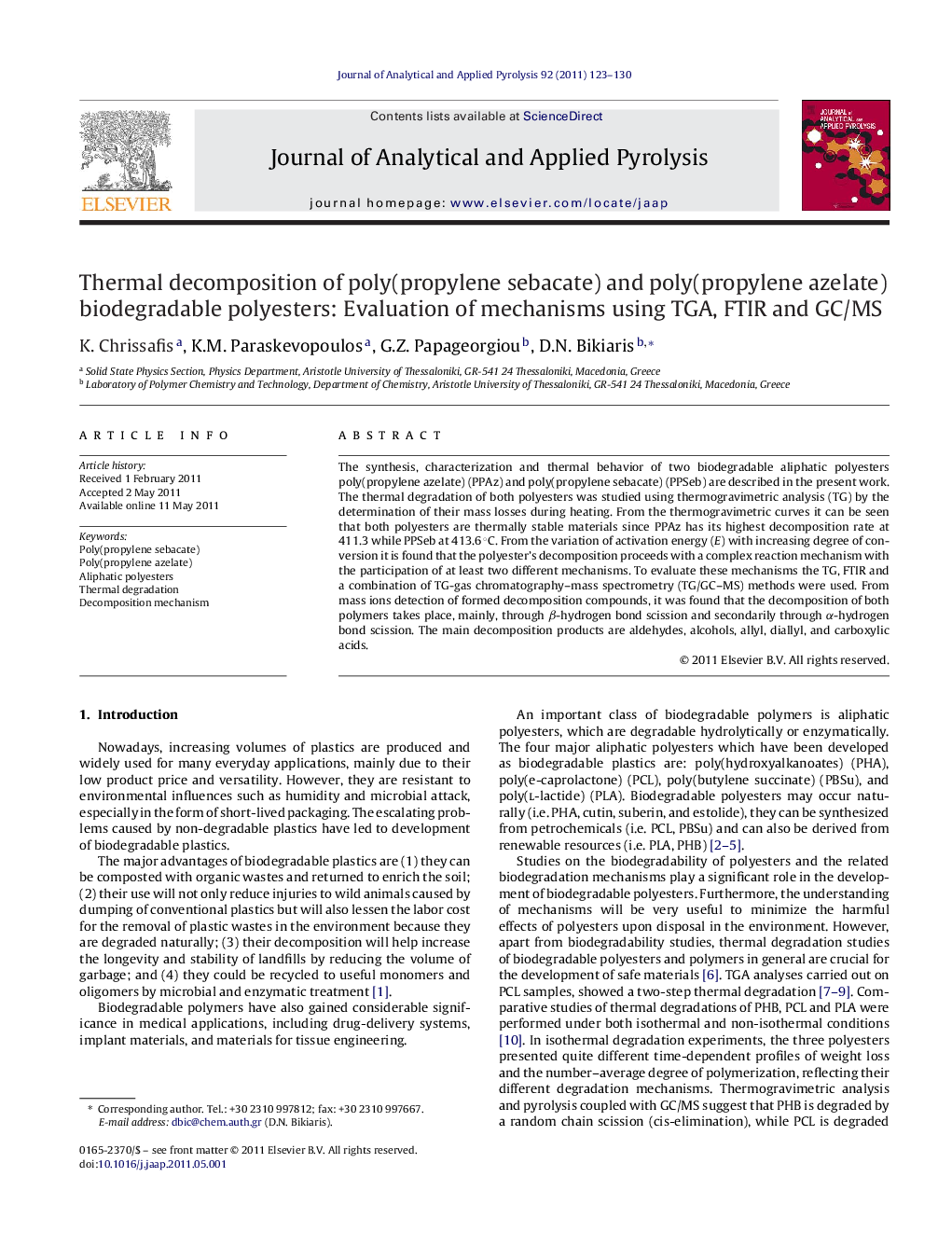| Article ID | Journal | Published Year | Pages | File Type |
|---|---|---|---|---|
| 1197864 | Journal of Analytical and Applied Pyrolysis | 2011 | 8 Pages |
The synthesis, characterization and thermal behavior of two biodegradable aliphatic polyesters poly(propylene azelate) (PPAz) and poly(propylene sebacate) (PPSeb) are described in the present work. The thermal degradation of both polyesters was studied using thermogravimetric analysis (TG) by the determination of their mass losses during heating. From the thermogravimetric curves it can be seen that both polyesters are thermally stable materials since PPAz has its highest decomposition rate at 411.3 while PPSeb at 413.6 °C. From the variation of activation energy (E) with increasing degree of conversion it is found that the polyester's decomposition proceeds with a complex reaction mechanism with the participation of at least two different mechanisms. To evaluate these mechanisms the TG, FTIR and a combination of TG-gas chromatography–mass spectrometry (TG/GC–MS) methods were used. From mass ions detection of formed decomposition compounds, it was found that the decomposition of both polymers takes place, mainly, through β-hydrogen bond scission and secondarily through α-hydrogen bond scission. The main decomposition products are aldehydes, alcohols, allyl, diallyl, and carboxylic acids.
